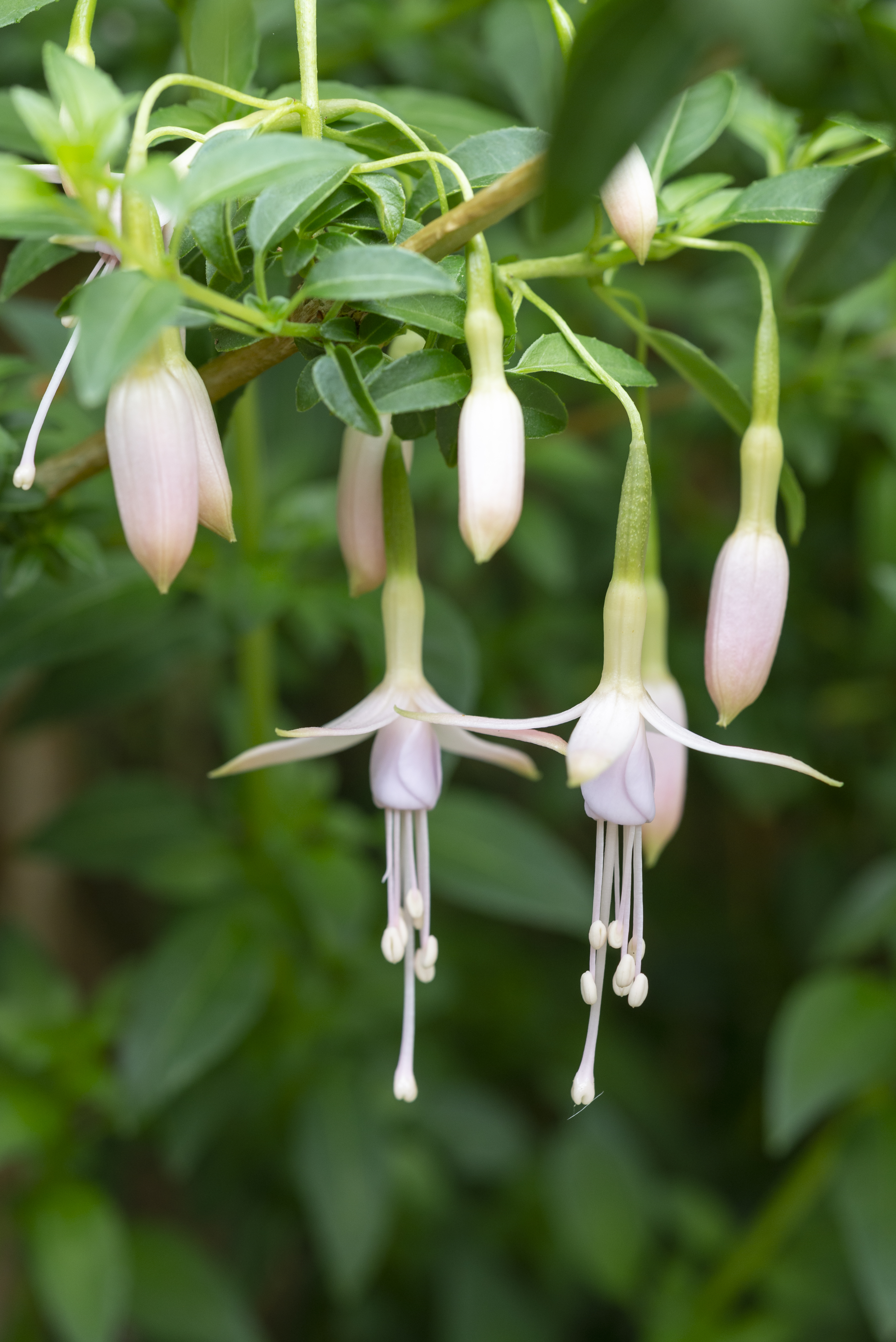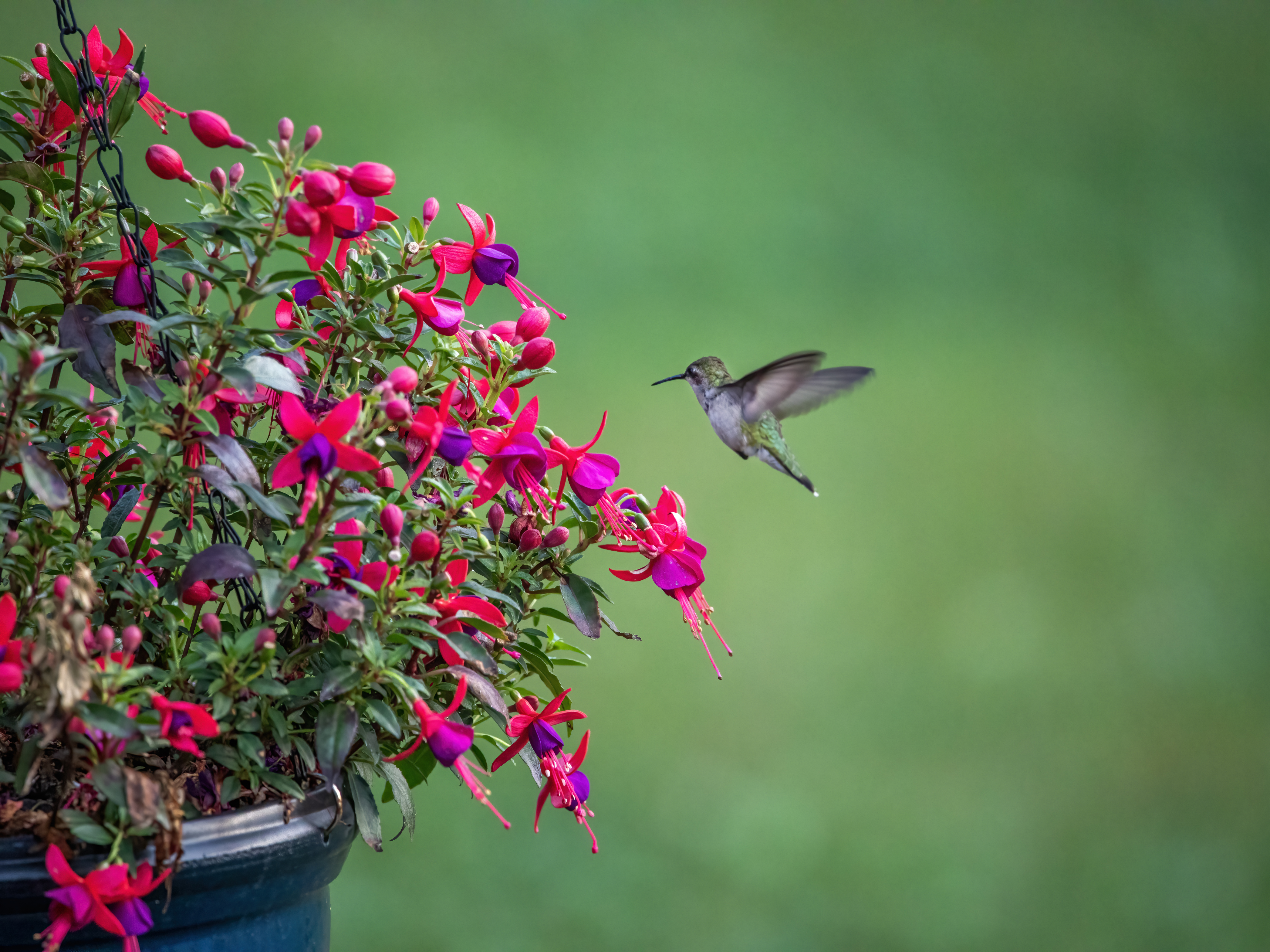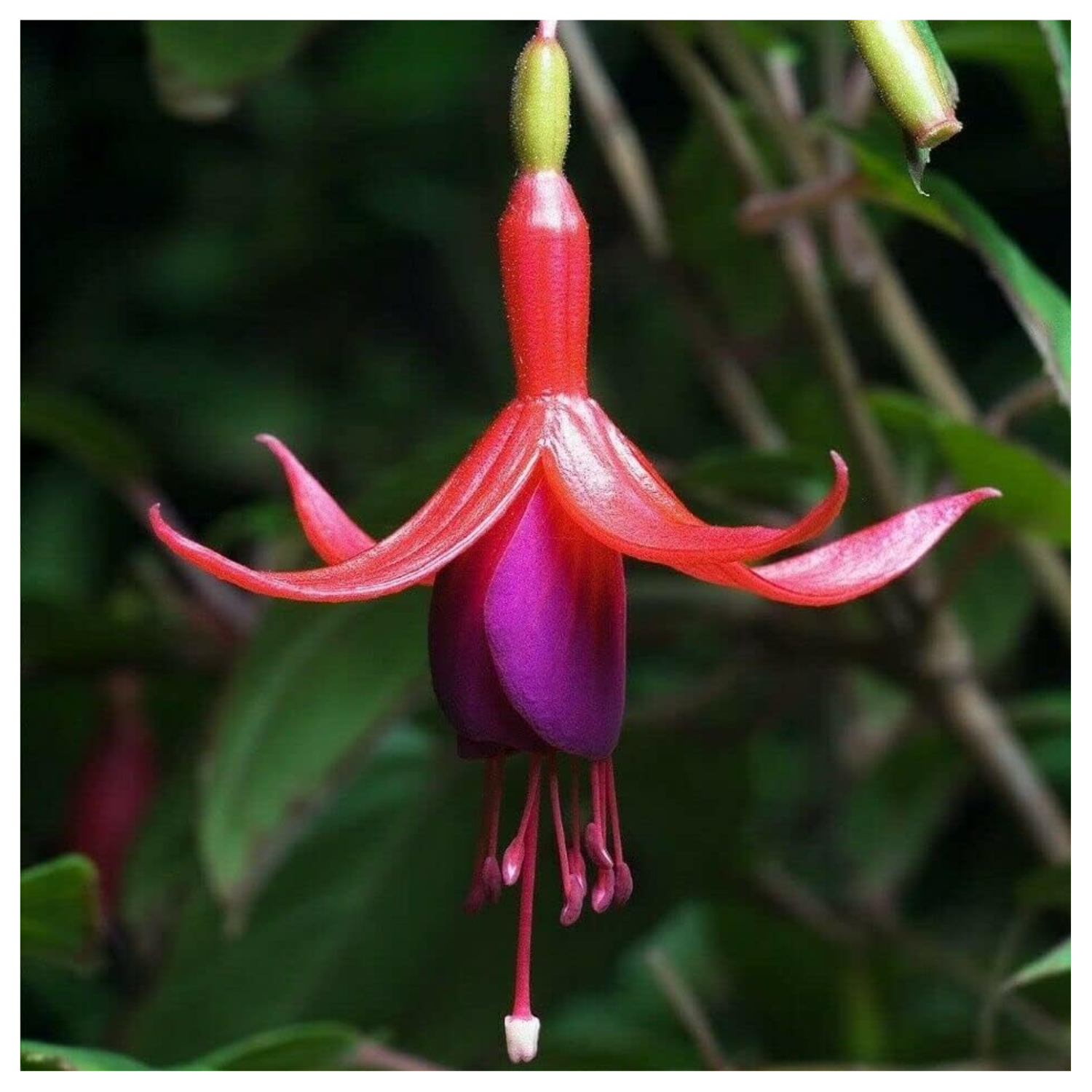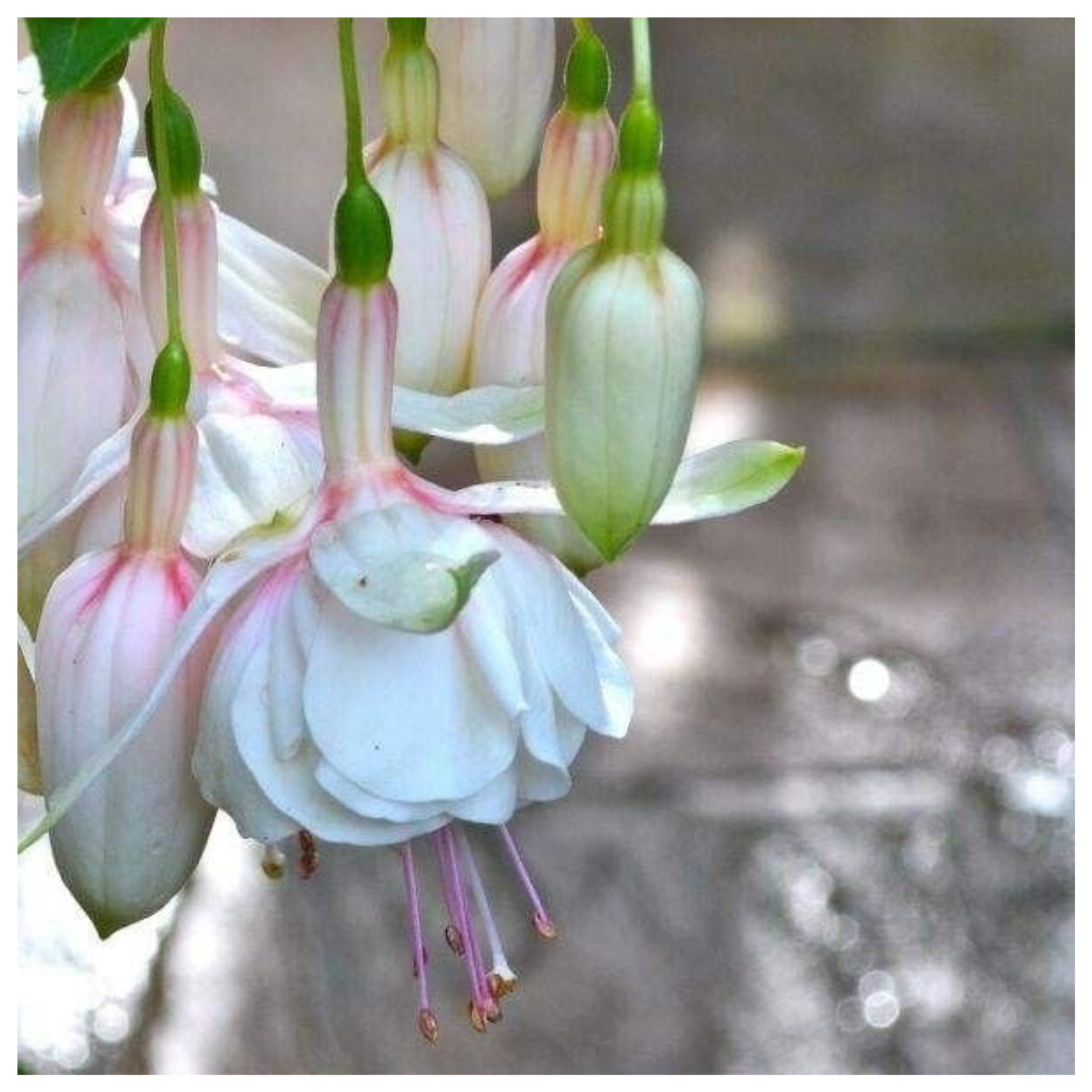How to Overwinter Fuchsias — 5 Simple Ways You Can Guard Your Flowers From a Looming Winter Freeze
These hardy flowers need some protection from garden frost, and all it takes is a few easy-to-follow steps


Fuchsias aren't your everyday flower. With their drooping flower heads and breathtaking multi-hued blossoms, fuchsias offer foliage that's a class apart. And with the great beauty they offer, comes a feasible responsibility for winter protection.
In the case of these blooms, overwintering them is the best practice to help them survive through the cold and flower once again next spring. This technique of plant care will come in handy to any fuchsia gardens situated in most USDA zones below 10 - 11.
Moreover, there's a difference in the protection process, depending largely on whether your fuchsias are of the tender or hardy variety. Not to worry though. We have in-depth insight from a gardening expert to help us learn the ins and outs of shielding these flowers for an abundance of pretty flowers post-frost.
How to Overwinter Fuchsias

In conversation with gardening expert Tony O'Neill, he tells us that overwintering is only necessary for tender fuchsias and is actually fairly easy. The key lies in identifying whether your fuchsias are hardy or tender and then acting as needed. Here's his step-by-step guide to overwintering your blooms.
Step 1 - Prune Back: When overwintering tender fuchsias, Tony tells us that the first step is to cut back your flowers to about one-third of their size. He explains that this helps conserve the plant's energy over the winter.
Step 2 - Move Indoors: Tony finds that shifting your plants indoors is considered the best practice for tender fuchsias. So gently, remove them from the ground and transfer them to pots for maximum safety.
Step 3 - Maintain Dormancy: "Be sure to keep the plant in a cool place (ideally around 45-50°F) and away from direct light to encourage dormancy," he says. "It's best to avoid fertilization during this period."
Step 4 - Reduce Watering: "Once they’re inside, water your fuchsias sparingly," he advises. "The plant should remain slightly moist but never waterlogged."
Step 5 - Check for Pests: Finally, he recommends periodically inspecting your fuchsias for any pests or diseases and removing any dead or rotting material to prevent fungal growth.
Growing fuchsias is a brilliant tactic to bring fall garden color into your backyard, and preserving these blooms will guarantee gorgeous hues that'll resurface once the frost ends.

I'm Tony O'Neill, a gardening expert and best-selling author. I am an educator with a thriving YouTube channel that has 434,000 subscribers and receives over 1.4 million monthly views. Through my award-winning website, simplifygardening.com, I share my passion for gardening and sustainability. I've authored books including "Simplify Vegetable Gardening," "Composting Masterclass," and "Your First Vegetable Garden," empowering individuals to cultivate their own green spaces.
Tender Vs Hardy Fuchsias

As some of the best flowers for hanging baskets and container gardens alike, knowing the difference between these two types of fuchsias is necessary to help you keep your blooms spritely.
If you're confused about the difference between tender and hardy fuchsias, Tony explains that the latter is known to withstand frost and cold weather, such as fuchsia magellanica. "They can often survive temperatures as low as 20°F (-6°C)," he notes. "But will still benefit from some winter protection like mulching around the base of the plant."
On the other hand, he points out that varieties like fuchsia triphylla are not frost-hardy and need to be brought indoors for overwintering. He explains that these tender fuchsias typically have more delicate leaves and flowers than their hardy counterparts.
How to Overwinter Potted Fuchsias

If you dabble in container gardening and have some potted fuchsias you're worried about, Tony's advice for overwintering them will put your stress to rest.
"You can leave hardy fuchsias in pots outdoors, but it’s important to insulate the pots," he says. "You can do so by wrapping them in bubble wrap or hessian sacks to protect the roots from freezing temperatures."
With regards to potted tender fuchsias, Tony recommends moving the pot indoors to a cool, frost-free location and pruning it back by one-third. Essentially the same process listed above for ground-grown tender fuchsias.
If your fuchsias are growing in pots or baskets, the process of overwintering them is definitely a breeze. But it's essential that you give the same love to your fuchsias that are growing in the ground.
And going forward, you can plan ahead by leaving them in their planters instead of shifting them to the ground, so as to make overwintering them far easier. That is unless of course they're of the hardy variety.
Preserving your fuchsias might seem like tons of work but saving them from the frost and having them rebloom next year will make this process so worth it.
FAQs
How to Prepare Hardy Fuchsias for Winter?

When overwintering hardy fuchsias, Tony recommends leaving hardy fuchsias in the ground, but adding a thick layer of mulch, compost, or straw around the base to insulate the roots.
"It's also best to avoid cutting back the plant until spring," he advises. "The old growth will protect the plant from frost damage, and you can prune it after the last frost in early spring."
Should You Cut Back Fuchsias While Overwintering?
Tony tells us that cutting back tender fuchsias is always a good idea pre-frost. He explains that they should be cut back by about one-third to prevent them from becoming too leggy and to conserve energy during the dormant season.
However, for hardy fuchsias, he recommends that gardeners avoid cutting them back in the fall. "Instead, let the plant’s growth die back naturally," he says. "You can prune it back in spring once new growth begins."

Price: $56
Size: 2.5" Pot
This live fuchsia magellanica plant from Amazon allows you to easily introduce some flowering foliage to your backyard.
Be The First To Know
The Livingetc newsletters are your inside source for what’s shaping interiors now - and what’s next. Discover trend forecasts, smart style ideas, and curated shopping inspiration that brings design to life. Subscribe today and stay ahead of the curve.

Amiya is a Home Wellness Writer at Livingetc. She recently graduated with a Masters Degree in Magazine Journalism from City, University of London, and has lent her words to beauty, fashion, and health sections of lifestyle publications including Harper’s Bazaar and Women’s Health. Her experience as a research analyst has equipped her with an eye for emerging trends. When she’s off the clock, she can be found reading, listening to music, or overanalyzing her latest Co-Star update.
-
 Biophilic Decluttering — What to Take Out of Your Home (and What to Put in) for a More Natural Home
Biophilic Decluttering — What to Take Out of Your Home (and What to Put in) for a More Natural HomeTry your hand at biophilic decluttering to ground your interiors, connect to the environment, and cure chronic clutter in one go. Here's how.
By Amiya Baratan
-
 10 Arrestingly Beautiful Milan Restaurants Locals *Actually* Dine at — Selected for Their Interiors
10 Arrestingly Beautiful Milan Restaurants Locals *Actually* Dine at — Selected for Their InteriorsBrought to you by our community of culture insiders, this edit of the best restaurants in Milan sees authentic Italian food and immersive design unite
By Gilda Bruno

